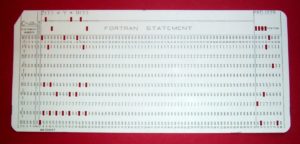 Some of you know that I am a classically-trained organist. What does that mean? Well, mostly it means that I know what all the knobs, pedals, and switches on an instrument like this are for.
Some of you know that I am a classically-trained organist. What does that mean? Well, mostly it means that I know what all the knobs, pedals, and switches on an instrument like this are for.
I play for at Christ Lutheran Church, just up the road in Georgetown, where I’ve been principal organist for over thirty years. Thanks to a generous bequest, we’re replacing our aging organ with a new Viscount, like the one pictured above.
First things first: Where do you start when you go shopping for an organ? In the next several installments of this series, I’ll tell the whole story—mainly because I’ve had so much fun with this process. Along the way, maybe you’ll pick up a few interesting details about life in the world of organs.
Have you ever been strolling through your local shopping mall and happened on a Big Organ Show Room?
Yes, you can play organs in music shops, but that’s not where you typically find an instrument for a church or cathedral.
You could look in the phone book (if you still have a phone book), but unless you already know what you’re looking for (Does the name Marshall and Ogletree leap to mind when you think of organ builders?), you’re likely to come up short. You could do a google search. Give that a try and let me know how that goes for you.
I have a slight advantage, having played the organ for fifty years, and I’ve had the opportunity to play a lot of different instruments, made by most of the surviving companies — including both pipe organs and electronic organs. I’m also sort of a technophile (as many of you know, they call me Dr. Techno-boy around here), and so I’ve kept up with the evolution of electronic organ technology.
 I’ve played CLC’s good old Allen for over thirty years. I’ve gotten to know its quirks (yes, there are serious quirks), and I’ve listened to various radio tubes grow dimmer and dimmer and then fade away forever. I’ve gotten spare parts (like radio tubes) from the Allen Underground, and I even found a new card reader in someone’s warehouse in Toronto. (For those of you who don’t know, we used to talk to computers with punch cards. It was big news when Allen incorporated technology so organists could use punch cards to extend the sounds the organ could make.)
I’ve played CLC’s good old Allen for over thirty years. I’ve gotten to know its quirks (yes, there are serious quirks), and I’ve listened to various radio tubes grow dimmer and dimmer and then fade away forever. I’ve gotten spare parts (like radio tubes) from the Allen Underground, and I even found a new card reader in someone’s warehouse in Toronto. (For those of you who don’t know, we used to talk to computers with punch cards. It was big news when Allen incorporated technology so organists could use punch cards to extend the sounds the organ could make.)
I’ve found workarounds for the sounds the organ can no longer make, and in general, I think I make the organ sound reasonably like an organ. (As an Allen technician once said to me, “You’re getting a really good sound out of . . . uh . . . that.”)
This is not at all to disparage the old Allen. On the contrary, I love that instrument, and no one knows it better than I do. But let me ask you a question: Do you have any electronic appliance in your house that was built in 1973 or so — and still works? No? Well, what would make you think that an even more complex piece of technology than a blender would still be in service 45 years later?
When it was built, these Allen were technological marvels. They combined analog sound (radio tubes!) with the latest new-fangled technology, circuit boards, to make the organ sing. It was awesome. Then.
Not only has the instrument aged, but the underlying technology has improved dramatically. I remember in college we used to have to rent a van to haul speakers just so we could have a dance party. (Well, a really loud dance party.) Have you heard a modern speaker with the latest technology? It’s impressive, at 1/100th the size.
Which leads me to this fundamental decision principle: The goal was not just to replace the Allen, but to surpass (which means update) — and to equip Christ Lutheran Church for the next couple of generations of music-making. The last goal is no small task. And it takes some explaining.
Next installment: Aw! I wanted a pipe organ!
Until next time!
Matthew
